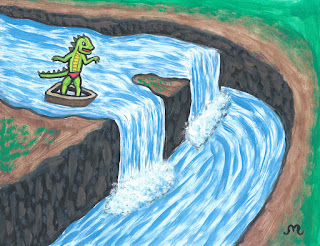Why Do Most Prices End With $0.99?
Have you noticed that the price of lots of things in stores end
with 99 cents? Why not just round it up to the next dollar? It could make life
simpler for both the customer and the cashier and even better, increase revenue
for the store owner.
Turns out, this is a clever marketing strategy. When we shop
at a store, we walk along the aisles scanning the shelves (“Free”, “Sale”, “Buy
One Get One”), but not really paying much attention to anything in particular. When
that lucky something catches our attention, we glance at its price.
During a quick glance, human mind pays more attention to the
digits in the price (dollars) and tend to ignore the decimals (cents). That salmon
fillet at $10 is a rip off, but it is value for money at $9.99! Store owners
know this “fact” and work hard to give you value for money.
The “psychological pricing” also works as an anti-theft
mechanism. When things are priced with rounded prices, a clerk could simply
bypass the cash register and pocket the cash. However, when prices end with 99
cents, the clerk is forced to make change and therefore use the cash register.
References:
This blogpost was co-authored by Vraj Patel



Comments
Post a Comment